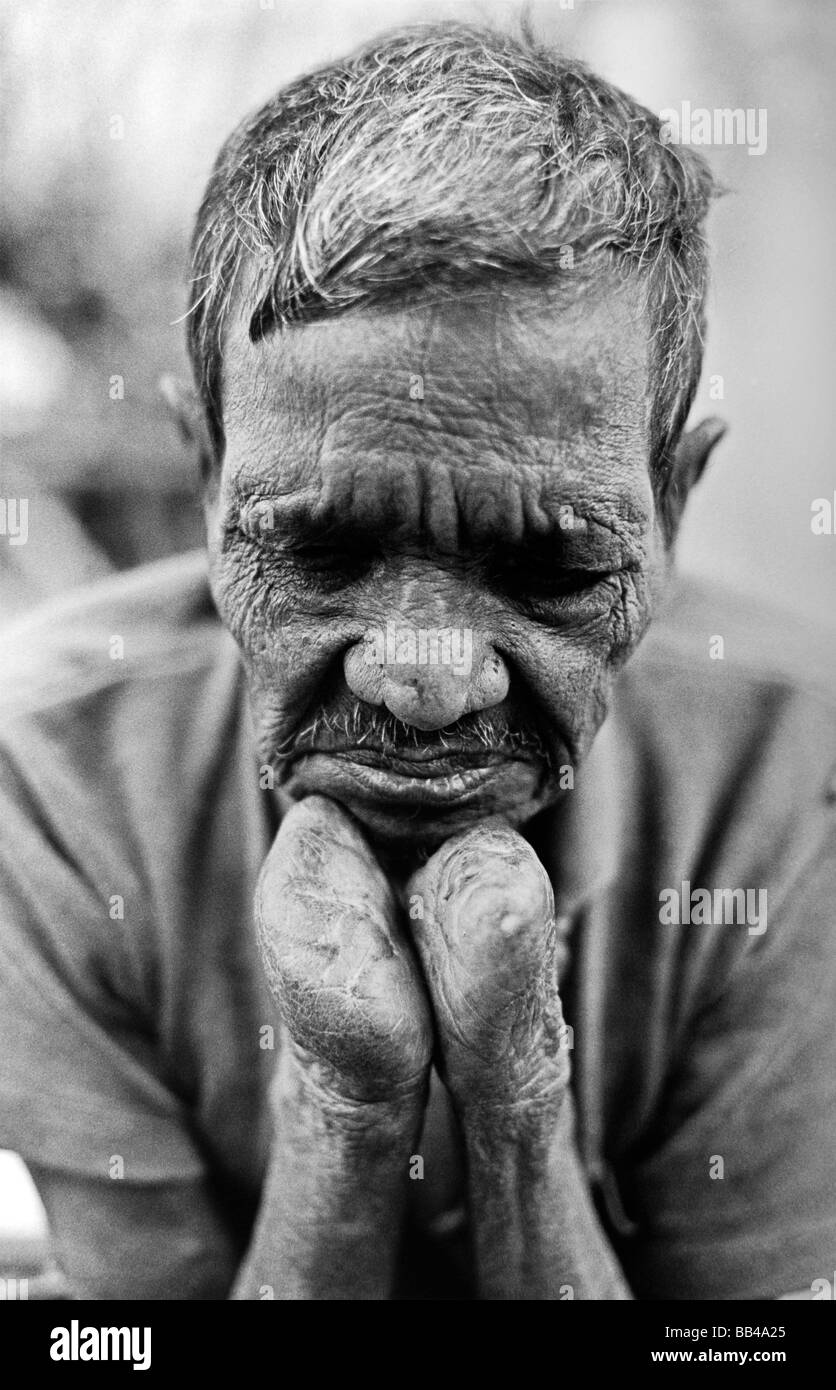Leprosy patient, resident of the lepers colony in Puri, India.

Image details
Contributor:
Cavan Images / Alamy Stock PhotoImage ID:
BB4A25File size:
51.7 MB (2.2 MB Compressed download)Releases:
Model - no | Property - noDo I need a release?Dimensions:
3410 x 5300 px | 28.9 x 44.9 cm | 11.4 x 17.7 inches | 300dpiLocation:
Puri IndiaPhotographer:
Jakub Sliwa / Aurora PhotosMore information:
Lepers colony run by Polish missionary Father Marian Zelazek (1918-2006). The colony, which has 600 permanent residents, offers lepers a home, food and clothes, and welcomes patients' families. In 2002 Father Marian was nominated for Nobel peace prize. He has been serving leprosy patients and their families in Puri for three decades. Leprosy or Hansen's disease is a chronic infectious disease caused by the bacterium Mycobacterium leprae. Leprosy is primarily a granulomatous disease of the peripheral nerves, mucosa of the upper respiratory tract, and skin lesions. If left untreated, there can be progressive and permanent damage to the skin, nerves, limbs and eyes. Leprosy has affected humanity since at least 600 BC, and was well-recognized in the civilizations of ancient China, Egypt and India. In 1995, the World Health Organization (WHO) estimated that between two and three million individuals were permanently disabled because of leprosy. Although the forced quarantine or segregation of patients is unnecessary, and can be considered unethical, a few leper colonies still remain around the world, in countries such as India, Vietnam, and the Philippines. The age-old stigma associated with the advanced form of the disease still lingers in many areas, and remains a major obstacle to self-reporting and early treatment. Effective treatment for leprosy appeared in the late 1940s with the introduction of dapsone and its derivatives. However, leprosy bacilli resistant to dapsone gradually appeared and became widespread, and it was not until the introduction of multidrug therapy (MDT) in the early 1980s that the disease could be diagnosed and treated successfully within the community. Worldwide, two to three million people are estimated to be permanently disabled because of Hansen's disease.India has the greatest number of cases, with Brazil second and Myanmar third.